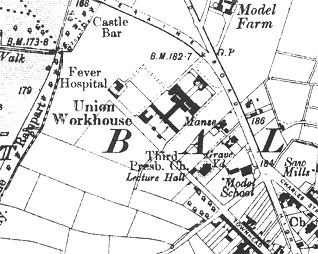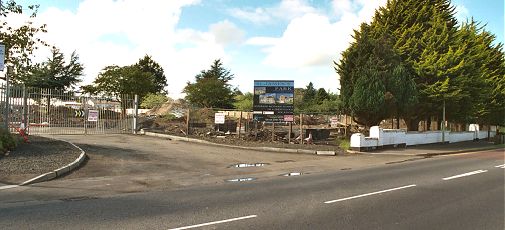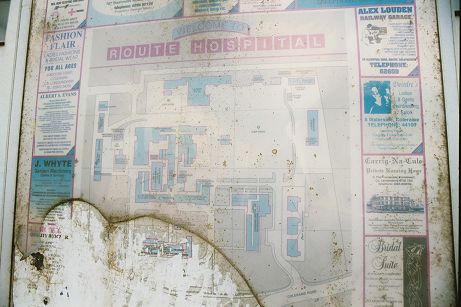Ballymoney, Co. Antrim
Ballymoney Poor Law Union was formed 18th January 1840, and covered an area of 298 square miles. Its operation was overseen by an elected Board of Guardians, 28 in number, representing its 22 electoral divisions as listed below (figures in brackets indicate numbers of Guardians if other than one):
Co. Antrim: Ballycregagh, Ballyhoe, Ballymoney (2), Benvardin, Carnmoon, Castle Quarter, Corkey, Dervock, Dunloy, Dirraw, Enagh, Killagan, Lower Killoquin, Upper Killoquin (2), Kilraghts, Seacon, Stranocum, The Vow.
Co. Londonderry: The Grove (2), Hervey Hill (2), Kilrea (2), Tamlaght (2).
The Board also included 9 ex officio Guardians, making a total of 37. The Guardians met each week on Monday.
The population falling within the Union at the 1831 census had been 51,869 with divisions ranging in size from Corkey (population 1,133) to Tamlaght (3,742) and Ballymoney itself (3,249).
The new workhouse, built in 1842, was designed by George Wilkinson. It occupied a six-acre site to the west of Ballymoney at the south side of the Coleraine road and could accommodate 700 inmates. The cost of the building was £6,785 plus £1,240 for fixtures and fittings etc. It was declared fit for the admission of paupers on 15th November 1842, and admitted its first inmates almost four months later on the 6th March 1843.
The site location and layout are shown on the 1906 OS map below.

Ballymoney workhouse site, 1906.
The buildings followed Wilkinson's typical layout. An entrance and administrative block at the north contained a porter's room and waiting room at the centre with the Guardians' board room on the first floor above.
The main accommodation block had the Master's quarters at the centre, with male and female wings to each side. At the rear, a range of single-storey utility rooms such as bakehouse and washhouse connected through to the infirmary and idiots' wards via a central spine containing the chapel and dining-hall.
During the famine in the mid-1840s, a female probationary ward was altered to accommodate an additional 50 inmates. A 32-bed permanent building was erected at the west of the workhouse.
At the 1901 census, the population of the Union was 28,276 including 13 officials and 148 inmates in the workhouse.
The workhouse closed in 1918. Following the partition of Ireland in 1921, the site became Route District Hospital. The fever hospital was subsequently demolished and some remodelling of the other buildings was carried out in 1937. The hospital buildings were demolished in 2003 to make way for a housing development.

Ballymoney former workhouse site from the east, 2003.
© Peter Higginbotham.

Ballymoney - Route Hospital plan, 2003.
© Peter Higginbotham.
Records
Note: many repositories impose a closure period of up to 100 years for records identifying individuals. Before travelling a long distance, always check that the records you want to consult will be available.
- Public Record Office of Northern Ireland, 2 Titanic Boulevard, Titanic Quarter, Belfast BT3 9HQ. Holdings include: Guardians' minute books (1840-1948); Dispensary minute books (1852-99); Workhouse registers (1843-1939); Admissions and discharges (1940-43); Indoor relief lists (1943-8); Outdoor relief register (1847-8); Outdoor relief lists (1928); Outward letter books (1899-1939); In Letters (1900-26); etc.
Bibliography
- Pauper to patient: A History of the Route Hospital Ballymoney 1840-1987 by Cecil Burns (1988)
- The Workhouses of Ulster by Michael H Gould (1983)
- The Workhouses of Ireland by John O'Connor (Anvil Books, 1995)
Links
- None.
Unless otherwise indicated, this page () is copyright Peter Higginbotham. Contents may not be reproduced without permission.


